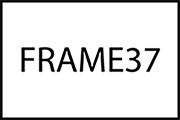About
About this site
Frame37 is principally organised in Galleries and Albums. Galleries are “best of” vertical cross sections of my photography, loosely grouped by themes and presented in chronological order. Albums mostly focus on travel photography, grouped by specific regions, countries, or cities. If you have been a regular visitor of frame37.net in the past, you may be missing your favourite album. The relaunch of this site is still work in progress, and I will try to successively rebuild the best albums in this new framework.
The best way to navigate Galleries or Albums is to click on any picture. This will open a window from which you can either start a slideshow (click on the triangle symbol in the upper left corner), or navigate manually from picture to picture with the left/right buttons of your keyboard, the scroll wheel of your mouse, or by clicking on the arrow symbols on the top or bottom of the page. Click on the X symbol in the upper left corner to return to the Gallery or Album home page at any time.
Size matters: for visual impact, this site is optimised for high resolution screens. Image files are therefore large and sometimes may need a little time to load over a slow Internet connection. This site is not optimised for mobile phones, but it should work on your iPad and similar-size mobile devices (rotate to landscape orientation).
About the name
Frame37.net was originally designed to showcase analog photography based on 35 mm film. Standard length 35 mm film (also known as 135 film) has a nominal capacity of 36 frames, however in practice it is usually possible to expose 37 frames (sometimes even 38) on this time-honoured medium. And an old photographer’s myth says that the last frame – frame 37 – is always the best shot on the film. Most photos on this site dated 2010 and before were shot on film indeed. The more recent ones were mostly taken with digital cameras.
About technology
Analog photography is still an important pillar of this Website. When I started Frame37.net in 2005, it was designed for film only, scanned at resolutions matched to the size of computer screens which were state of the art at that time. For the present version, most of the analog pictures were re-scanned at much higher resolution from the original black-and-white negatives and colour slides (very few pictures are scans of colour negatives). I am the fortunate owner of two Nikon film scanners (CoolScan 5000 and 9000) which are around 15 years of age and still work flawlessly. A special mention is due to the Hamrick family and their excellent VueScan software, supporting scanners that have been left orphaned by their vendors many years ago. Infrared cleaning still works perfectly for color film but the black-and-white scans needed many hours of painstaking retouching to remove dust and other imperfections.
Scans and digital photographs were post-processed in Adobe Lightroom. I use Photoshop only in rare cases. The Website had originally been developed in Dreamweaver when it was still a Macromedia product, and had become difficult and costly to maintain after Dreamweaver was acquired by Adobe. It has now been redesigned from scratch, based on WordPress and on the Photography theme by ThemeGoods.
About me
I am an amateur photographer who was born in the north of Germany but has spent most of his life in Switzerland. I have started taking pictures, developing black & white film, and making prints almost sixty years ago. I switched to digital photography late (in 2011), inter alia because my favourite camera maker was late in making the transition, and almost missed the digital revolution. However I have not forgotten the magic of film-based photography: I still take good care of my analog equipment and my analog archives, and hope to (partly) return to film photography in the future.
In real life, I am a physicist. I hold a PhD in physics from the Ludwig Maximilians University of Munich; for most of my professional career, I have been doing research in particle physics at the European Organization for Nuclear Research (better known under the acronym CERN) in Geneva. I live in the charming little town of Nyon on Lake Geneva. Nyon features prominently in the Lac Léman gallery which is a tribute to my adopted home.
